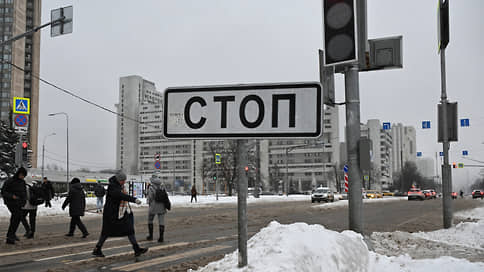The court stopped the raids on “Stop”
[ad_1]

The Supreme Court (SC) recognized as legal the GOST norm allowing the installation of a “Stop” sign at a height of 1.5 m at the edge of the sidewalk. A resident of Kirov, Ksenia Taratuto, filed a complaint against the standard. Because of her fogged glasses, she could not see the sign installed at a height of 1.5 m above the sidewalk and, having hit herself, received a head injury. Similar cases occurred in Novosibirsk, Tomsk, Simferopol, Barnaul, Penza.
The published decision of the Supreme Court concerns the appeal of Kirov resident Ksenia Taratuto following the incident that happened to her in April 2023. Ms. Taratuto, because of her fogged glasses, did not notice the “Stop” road sign installed on the edge of the sidewalk at a height of one and a half meters. Let us recall that such a sign indicates the line in front of which the driver must stop at an intersection when the light is red. Similar incidents occurred with other residents of Kirov, which they talked about in the local public. “Kommersant” discovered that over the past few years the media have reported complaints from citizens about low-installed signs in Novosibirsk, Tomsk, Simferopol, Barnaul, and Penza.
Ksenia Taratuto, who received a head injury, contacted the city administration, the traffic police, Rosstandart, and the prosecutor’s office with complaints. The departments’ responses boiled down to the fact that there were no violations: GOST 52289 allows the installation of a stop sign at this height with an error of 10 cm. After this, a lawsuit followed in the Supreme Court demanding that the norm be declared illegal. Other types of signs are usually installed at a height of 2 m.
Ksenia Taratuto noted in her lawsuit that GOST violates her rights, conflicting, among other things, with Art. 42 of the Constitution (which states that everyone has the right to a favorable environment), as well as the Law “On Road Traffic Safety” (it establishes the obligation of the authorities to create conditions for the movement of pedestrians). She explained that the sign interferes with pedestrians and creates a health hazard, including for people with disabilities.
The Supreme Court in its decision indicated that the plaintiff erroneously interpreted the rules of law: GOST does not contradict the laws to which the applicant refers, while the applicant’s arguments boil down to the fact that the standard needs to be changed.
Rosstandart (the defendant in Ksenia Taratuto’s lawsuit) told Kommersant that the agency is not authorized to assess the problem of using the Stop sign, and advised to contact the Ministry of Internal Affairs.
The Technical Committee “Road Safety” under Rosstandart (essentially reflecting the position of the State Traffic Safety Inspectorate) previously recognized the idea of regulating the height of installation of signs on sidewalks in GOST as “inappropriate.” In their response to Ms. Taratuto, officials said that a stop sign can be placed at a height of 1.5 m only if there is no marking in the form of a stop line (and according to the rules, in the vast majority of cases there should be one) and a traffic light.
The Kirov administration, responding to a request from Kommersant, reported that they had already moved the 6.16 signs to a height safe for pedestrians.
Leading specialist of the St. Petersburg Traffic Management Directorate Dmitry Popov explained to Kommersant: the controversial sign is positioned so that the driver can see where the stop line is. The fine for crossing the line, let us remind you, is 800 rubles. In 2022, the traffic police recorded 2.6 million such violations. “We try to place the sign so that it is not in the path of pedestrians,” says Dmitry Popov. The capital’s data center told Kommersant that in Moscow they put up a stop sign at a height of 1.5 m and consider it “inappropriate” to cancel the standards.
The head of the Probok.net expert center, Alexander Shumsky, confirmed that the problem is of a large-scale nature, partly it can be solved by smaller signs, which is allowed by GOST (the capital’s authorities have been using them for several years). He believes that a stop sign is not needed in 98% of cases; drivers already understand where to stop – before the marking line or before the border of the intersection. The problem with low installation of signs is solved by vertical “Stop” signs, but this will require changes to the standard, says Andrei Mukhortikov, a member of the public council at the regional Ministry of Transport. The Moscow Data Center told Kommersant that a project is now being prepared to amend GOST, which proposes “optimizing” the placement of road signs and shortening the “Stop Line” signs, but did not disclose details.
[ad_2]
Source link








